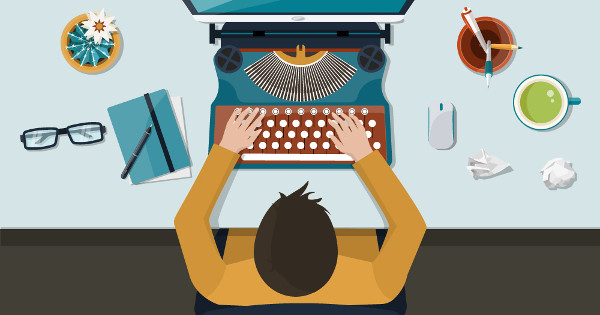You sit down at your computer to work on your novel.
You place your fingers on the keyboard… and almost instantly experience severe pain.
It emanates from your elbow, shoots up and down your arm, and makes writing nearly impossible.
A good friend of mine, author and blogger Erica Deel, is currently struggling with this exact challenge.
Wrist, elbow, finger, and shoulder pain are all common ailments among writers, and others who spend their work day sitting at a computer.
Erica’s elbow pain was an excellent reminder to me that, as writers, we need to ensure our workstations are set-up in an ergonomically correct manner that supports our physical health.
Even if you’re not experiencing pain from repetitive stress injury (yet), as I discuss in my training video How to Create a Regular Writing Habit, your writing environment and workstation set-up can also play a huge role in your overall productivity as a writer.
If you want to be pain-free and productive, you MUST give some thought to your office set-up.
Enter Emily Johnson.
Emily writes for Omnipapers.com, a website for writers (primarily targeted at students). She is an expert in setting up a work station to produce the best results.
I’ll let Emily take it from here:
Thanks, Kevin!
The importance of a well-organized workspace is, unfortunately, often underestimated. Making a few simple changes to your office set up can:
- increase productivity;
- keep you motivated and inspired;
- save time;
- boost spirits;
- improve brain functions;
- prevent health problems;
- reduce a risk of computer eye strain.
Here are three simple steps you can take today to optimize your writing environment:
Organize Your Writing Desk
If you want to organize your writing desk, you need to clean it up: hide different items into a locker, use boxes for utensils, put books on shelves. Be sure, however, to keep all important things close to you: a lamp, a computer, a pen/pencil, stickers, and a digital highlighter.
Demarcate Two Zones
Be sure to have two zones: computer and non-computer. As you might guess, a computer zone is for working online: communication with clients, researching, and completing your tasks. A non-computer zone is for relaxation and inspiration boosts.
Add Some Comfort
Pick a comfortable office chair to prevent health problems. If your chair supports the lower back, you’ll experience back pain relief. To take care of your health, stand up from time to time, or even try a standing desk. (Hemingway wrote standing! — Kevin)
Workspace optimization is not as difficult. Make even a few small tweaks, and you will see your productivity skyrocket!
For more details, check out the cheat sheet infographic I have created for you.
Emily Johnson is the creator of Omnipapers.com, a website focused on essay writing services for students. Many college students struggle with essay writing. Omni Papers can help!
Kevin T. Johns is an author, writing coach, and ghostwriter. He helps authors from around the world get their stories out of their heads, onto the page, and into readers hands. Grab a free copy of his short guide for authors by clicking the image below.









